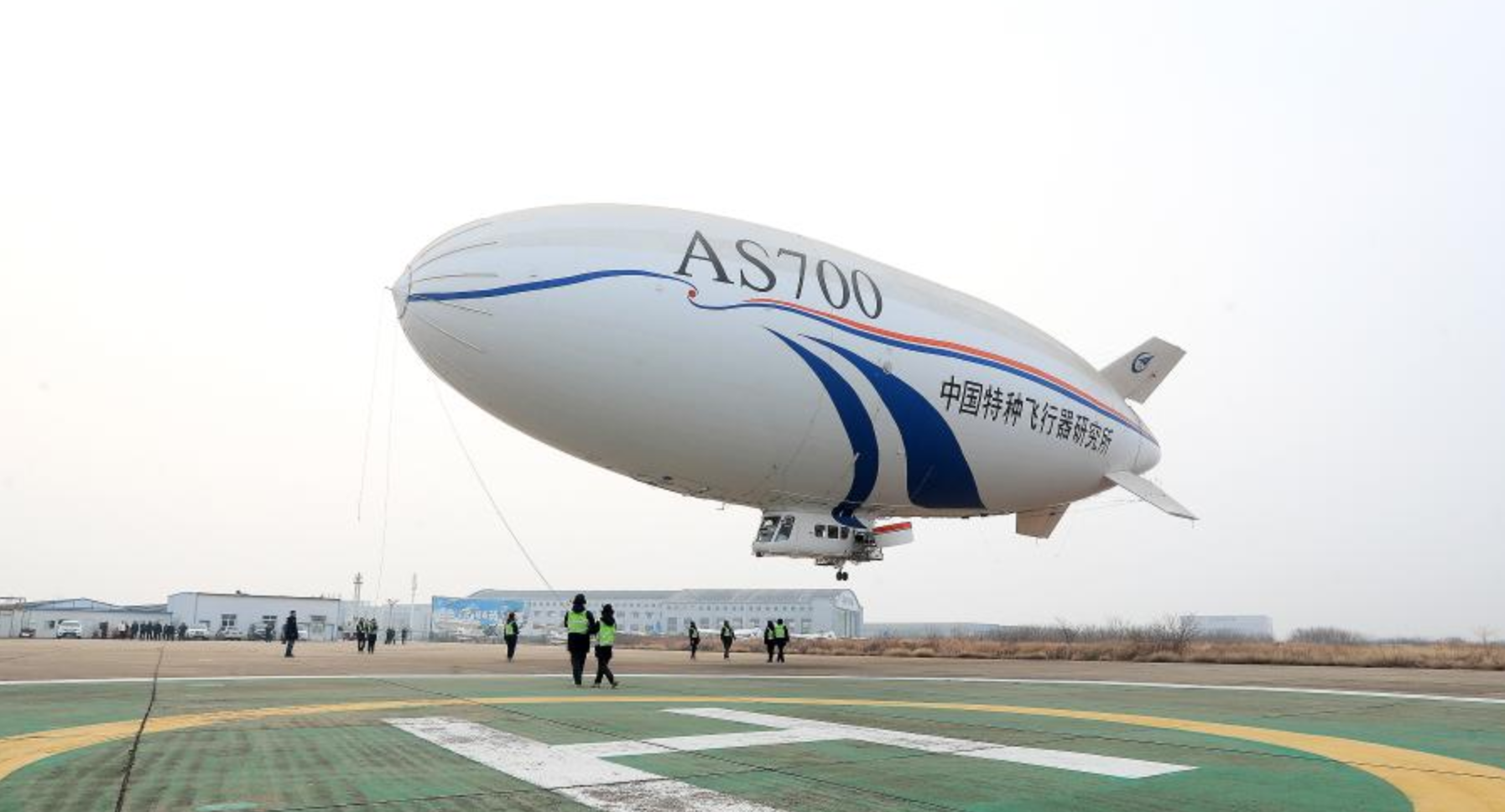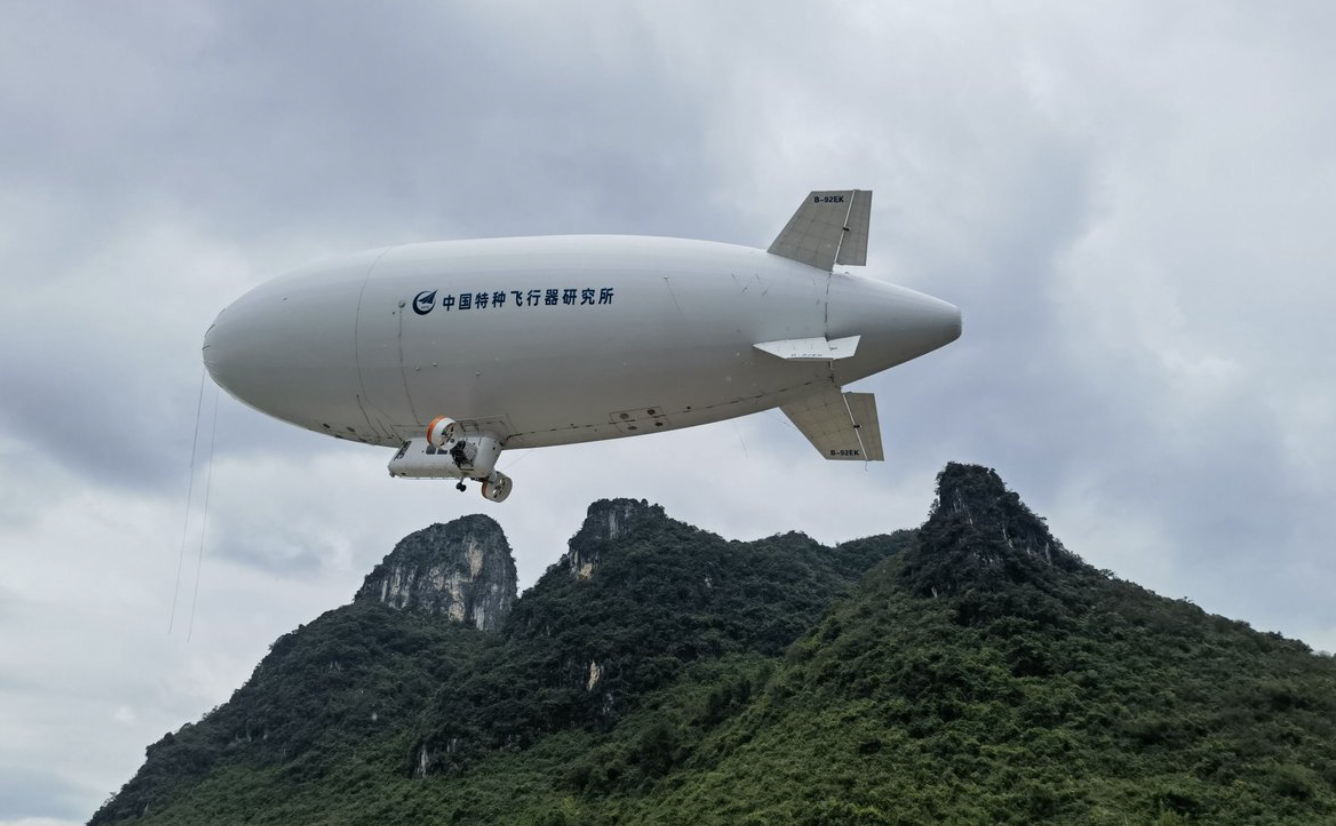Support CleanTechnica’s work through a Substack subscription or on Stripe.
Zhejiang Airspace Integration Low-Altitude Industry Development Company just placed an order of 18 AS700 manned airships from the Aviation Industry Corporation of China (AVIC) last November 18. This deal, one of the largest modern acquisitions of manned lighter-than-air vehicles, marks a milestone in China’s air travel industry. CleanTechnica picked up the story from China Daily News but quickly connected with Zhejiang Airspace to get additional information.
China’s expanding “low-altitude economy” is shifting from prototype to commercial deployment. A new bid is now referred to as the “low-altitude, slow-flight mobility,” as the country embraces airships—once considered relics of early aviation—as practical, commercially viable aircraft, to be used, at least this time, for mostly tourism purposes.
The AS700—a.k.a “Xiangyun”—measures roughly 50 meters in length, carries about ten passengers, and is designed to fly between 100 and 300 meters above ground. It has a maximum take-off weight of 4,150 kilograms, a longest flight range of 700 kilometers, a maximum endurance of 10 hours, and a top speed of 100 kilometers per hour and is powered by a gasoline engine. According to our sources, within the next few months, additional aircraft (not within the scope of the 18 ordered) will be released with purely electric propulsion.
The airship is designed, developed, and produced by the Special Vehicle Research Institute of AVIC, which is based in the industrial town of Hubei.
Carbon calculations first
Theoretically, even with combustion engines, these isn’t any air transport as low-carbon as a blimp, rather airship. Using fuel burn per hour in liters (L/hr), a small regional airplane that can carry about 10 people—such as a Cessna 208 Caravan—typically burns 250–300 liters of aviation fuel per hour, producing around 650–800 kg of CO₂ per hour, about 65 to 80 kg per person, at full load.
Since airships do not need to generate lift during cruise (helium provides buoyancy), propulsion energy is used mainly to overcome drag. As a result, a gasoline-powered airship like the AS700 (with its tiny 1500 cc engine) typically burns 15–50 liters per hour, depending on speed and wind, equating to only 35–120 kg of CO₂ per hour—an 80% to 90% difference!
Boost for tourism in China’s karst and coastal regions
In these low-altitude corridors, it occupies a niche that sits comfortably between drone-level operations and conventional high-altitude aviation; it moves slowly enough to offer panoramic sightseeing, steady aerial surveillance, and quiet, low-impact flights over populated or environmentally sensitive areas. China’s tourism-rich provinces, especially coastal and scenic regions such as Zhejiang, appear eager to deploy these airships for sightseeing tours.
The provincial government, however, has other ideas, including environmental monitoring, coastal oversight, rescue or delivery of basic services in areas with rugged terrain or in remote communities or in fragile ecosystems. Airships provide a low-impact aerial solution, and other services that benefit from hovering endurance, smooth flight, and minimal noise. From a practical standpoint, airships offer advantages that neither drones nor helicopters can fully match. Unlike drones, they can transport passengers or heavier payloads; unlike helicopters, they hover steadily without generating loud rotor noise or requiring high fuel consumption.
Electric power to come
Just months earlier, in February 2025, AVIC demonstrated what may become a defining feature of next-generation airships: the AS700D, a fully electric variant powered by lithium batteries. That aircraft’s maiden flight took place in Jingmen, central China, and engineers and pilots reported significantly lower noise levels and smoother handling compared with traditional fuel-powered models.
According to Zhejiang Airspace, because the electric propulsion system maintains constant weight throughout the flight—unlike combustion engines, whose fuel weight diminishes as fuel is consumed—the AS700D reportedly offers easier landings and takeoffs.
The company engineers also said that the shift to electric power simplifies buoyancy management and improves operational stability, addressing one of the historical challenges of lighter-than-air flight. At the same time, electric propulsion eliminates emissions and reduces environmental disturbance, opening the door for operations in eco-sensitive zones or urban areas where noise and pollution are of concern.

Low-altitude aircraft
These technical and operational advantages have not gone unnoticed by policymakers.
Since the February tests and the last runs in September and October, China’s broader low-altitude economy initiative, which encompasses drones, eVTOL aircraft, and manned airships, reflects a deliberate effort to open sub-1,000-meter airspace for commercial, industrial, and public-service uses.
By relaxing airspace restrictions and promoting pilot zones and regulatory frameworks, authorities aim to seed a layered aviation ecosystem in which slow, stable, and long-duration aircraft operate alongside faster, point-to-point vehicles. In that ecosystem, airships like the AS700 series may carve out a distinct and complementary niche—persistent, visible, and capable of carrying passengers or payloads without the noise and infrastructure demands of traditional aircraft.
Moreover, the adoption of electric propulsion transforms the economics of lighter-than-air flight.
Costs associated with fuel, complex maintenance, and ground infrastructure decline. Adhesion to environmentally friendly, near-zero-emission standards becomes easier. The AS700D—and by extension the broader AS700 line—could be among the first commercially viable electric airships in the world.
Another revival
The rise of airships also reflects a broader reinvention of what “flight” can mean in the 21st century.
For decades, the emphasis has been on speed, altitude, and capacity—the hallmarks of commercial jets and high-performance aircraft. But as urban airspace grows crowded, energy costs rise, and environmental concerns deepen, a different paradigm is emerging: slow, steady, localized, and sustainable. Airships represent a subtle but powerful shift. They are not designed to cross continents at high speed; instead, they are meant to operate quietly and efficiently within low-altitude corridors.
China’s low-altitude economy is the world’s largest active experiment in this model. And no other country seems to be looking at it. By combining regulatory reforms, technological innovation, and commercial investment, the country may be pioneering a new category of aviation—one that values endurance over speed, accessibility over exclusivity, and ecological harmony over raw power. In five years time, the whole world will again be left behind by both product and policy progress by the Chinese, and will all be buying commercially viable blimps from them.
Whether this model will catch on globally remains uncertain because a cursory review of global policies especially in Europe and the US regarding remotely-piloted and low flying aircraft may need to be changed to accommodate airships. But with the AS700 order and the successful AS700D test flight, lighter-than-air aviation has moved from the realm of nostalgic visions into the frontier of practical mobility, at least in the Mainland.

Sign up for CleanTechnica’s Weekly Substack for Zach and Scott’s in-depth analyses and high level summaries, sign up for our daily newsletter, and follow us on Google News!
Have a tip for CleanTechnica? Want to advertise? Want to suggest a guest for our CleanTech Talk podcast? Contact us here.
Sign up for our daily newsletter for 15 new cleantech stories a day. Or sign up for our weekly one on top stories of the week if daily is too frequent.
CleanTechnica uses affiliate links. See our policy here.
CleanTechnica’s Comment Policy




